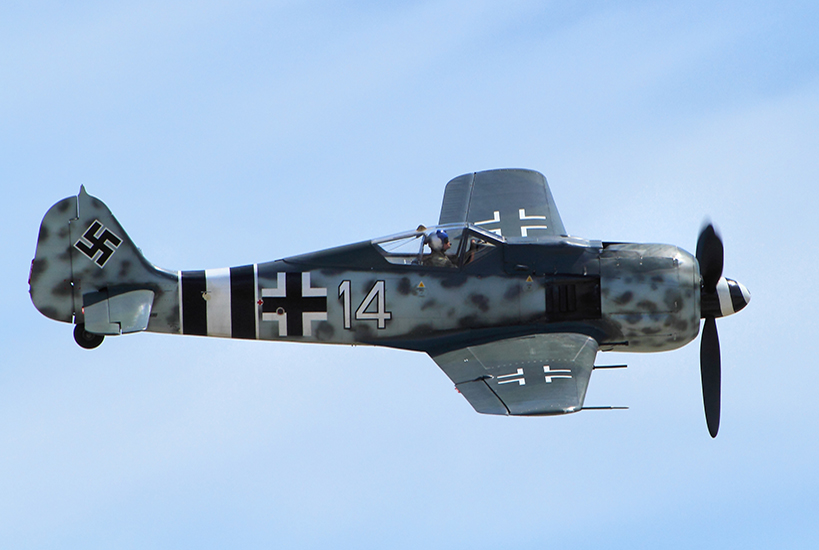Houlton, John Arthur
- Date of birth:
- September 23rd, 1922 (Christchurch, New Zealand)
- Date of death:
- April 16th, 1996 (Whangaparaoa, New Zealand)
- Service number:
- NZ 413541
- Nationality:
- New Zealander
Biography
Johnnie Houlton was a Public Service cadet before joining the RNZAF in June 1941. After receiving his wings he was posted to No. 485 Squadron in June 1942. The following month he volunteered for Malta, joining No.185 Squadron on HMS Furious.
In December 1942 Houlton was posted back to England. He joined 602 Squadron in January 1943 only to rejoin No. 485 three weeks later.
On August 27th, 1943 he destroyed a FW 190 descending from 27,000 feet to ground level. The 190’s wing caught a power line and it dived into the ground. On 16 September 1943 Houlton shared in the destruction of another FW 190.
During the six weeks prior to D-Day Houlton flew eleven dive-bombing sorties. On one trip his bomb hung up and he defied orders and landed safely back at base instead of heading out to sea and baling out. Houlton received reprimands from both squadron and airfield commanders. On June 6th, 1944 Houlton was credited with shooting down the first Allied aerial succes on.D-Day when he shot down a Ju88 and shared a second. June was a productive month for hims as on the 8th and on the 12th shot down Me 109's.
In July Houlton was temporarily attached to the Ministry of Aircraft Production to lecture and introduce the new gyro gun-sight that 485 Squadron had helped to develop.
He rejoined 485 in August 1944 and moved across on the 31st to its new base at Carpiquet, near Caen.
Sent for a rest, he rejoined 135 Wing in March 1945 and was posted to 274 Squadron, to fly Tempests. On 3 May he destroyed a Do 217 forty miles south-west of Kiel, the unit's last victory of the war.
He returned to New Zealand and stayed in the RNZAF until 1955 after which he continued to fly commercially.
In 1985 he published his autobiography 'Spitfire Strikes'. After the war the Spitfire he flew on D-Day was converted into a two-seater --and is still flying today(2011) - nowadays known as the 'Grace Spitfire'.
Do you have more information about this person? Inform us!
- Period:
- Second World War (1939-1945)
- Rank:
- Flying Officer
- Unit:
- No. 485 (RNZAF) Squadron, Royal Air Force
- Awarded on:
- September 6th, 1944
"On 11 July 1942, on a 'Rhubarb' to Ostend, he destroyed a locomotive and damaged another. On 27 August 1943, he destroyed a Fw. 190, whilst acting as high cover to Fortresses. On 22 May 1944, he led Red Section on a 'Ranger', attacking and damaging two tanks and troop transport. Since D-Day this officer has destroyed one Ju. 88 and two Me. 109s and shared in the destruction of another Ju. 88.
As will be seen from the particulars above and the details of sorties carried out, this officer has at all times set a fine example to his fellow pilots by his initiative and keenness to come to grips with the enemy".
- Period:
- Second World War (1939-1945)
- Period:
- Second World War (1939-1945)
- Period:
- Second World War (1939-1945)
- Period:
- Second World War (1939-1945)
- Period:
- Second World War (1939-1945)
Sources
- - Third Supplement to The London Gazette Issue 36686 published on the 1 September 1944
- New Zealand Fighter Pilots Museum
- Flight Lieutenant John Artur Houlton DFC
- Spink & Son










